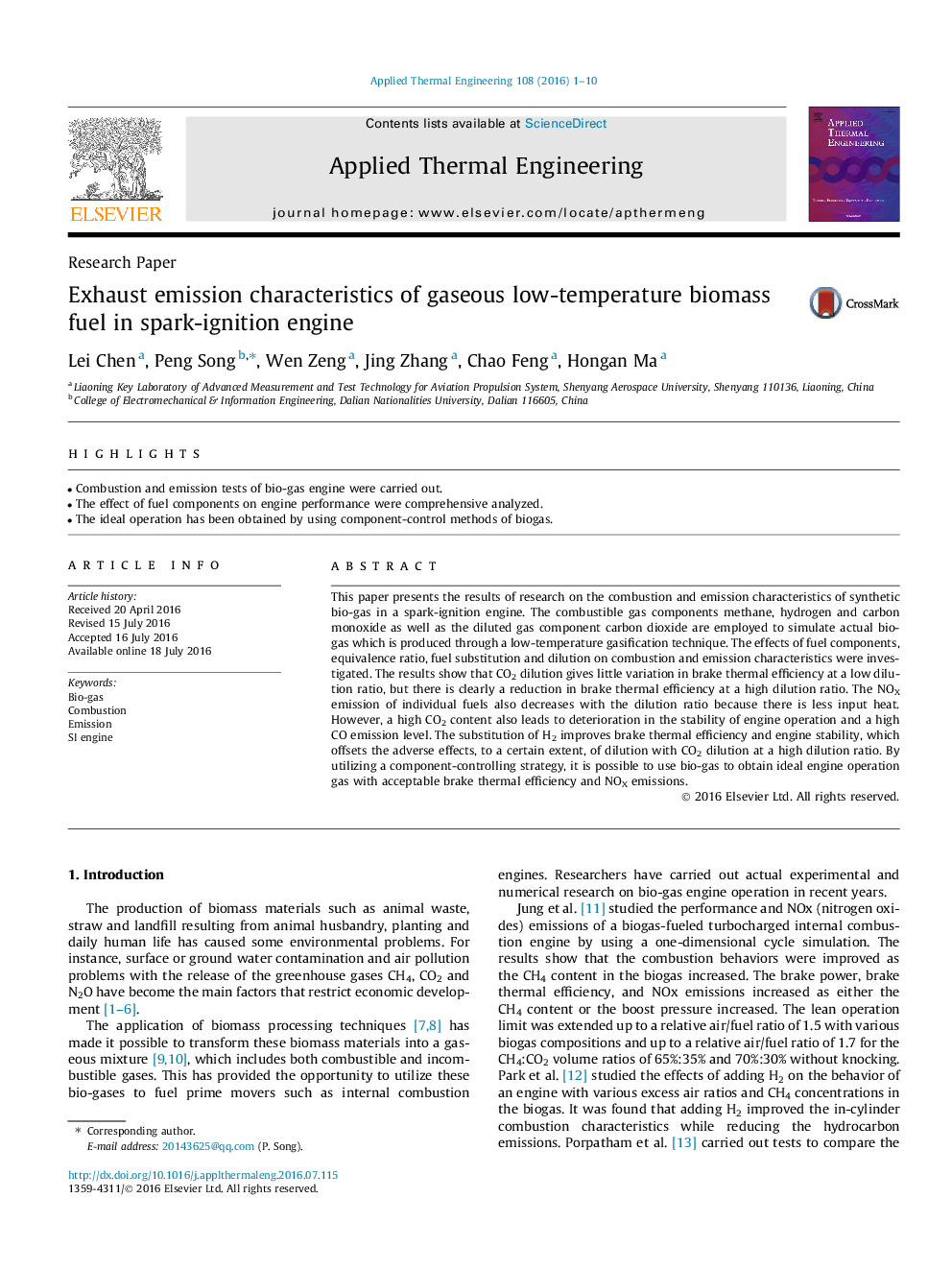| Article ID | Journal | Published Year | Pages | File Type |
|---|---|---|---|---|
| 7046648 | Applied Thermal Engineering | 2016 | 10 Pages |
Abstract
This paper presents the results of research on the combustion and emission characteristics of synthetic bio-gas in a spark-ignition engine. The combustible gas components methane, hydrogen and carbon monoxide as well as the diluted gas component carbon dioxide are employed to simulate actual bio-gas which is produced through a low-temperature gasification technique. The effects of fuel components, equivalence ratio, fuel substitution and dilution on combustion and emission characteristics were investigated. The results show that CO2 dilution gives little variation in brake thermal efficiency at a low dilution ratio, but there is clearly a reduction in brake thermal efficiency at a high dilution ratio. The NOX emission of individual fuels also decreases with the dilution ratio because there is less input heat. However, a high CO2 content also leads to deterioration in the stability of engine operation and a high CO emission level. The substitution of H2 improves brake thermal efficiency and engine stability, which offsets the adverse effects, to a certain extent, of dilution with CO2 dilution at a high dilution ratio. By utilizing a component-controlling strategy, it is possible to use bio-gas to obtain ideal engine operation gas with acceptable brake thermal efficiency and NOX emissions.
Keywords
Related Topics
Physical Sciences and Engineering
Chemical Engineering
Fluid Flow and Transfer Processes
Authors
Lei Chen, Peng Song, Wen Zeng, Jing Zhang, Chao Feng, Hongan Ma,
